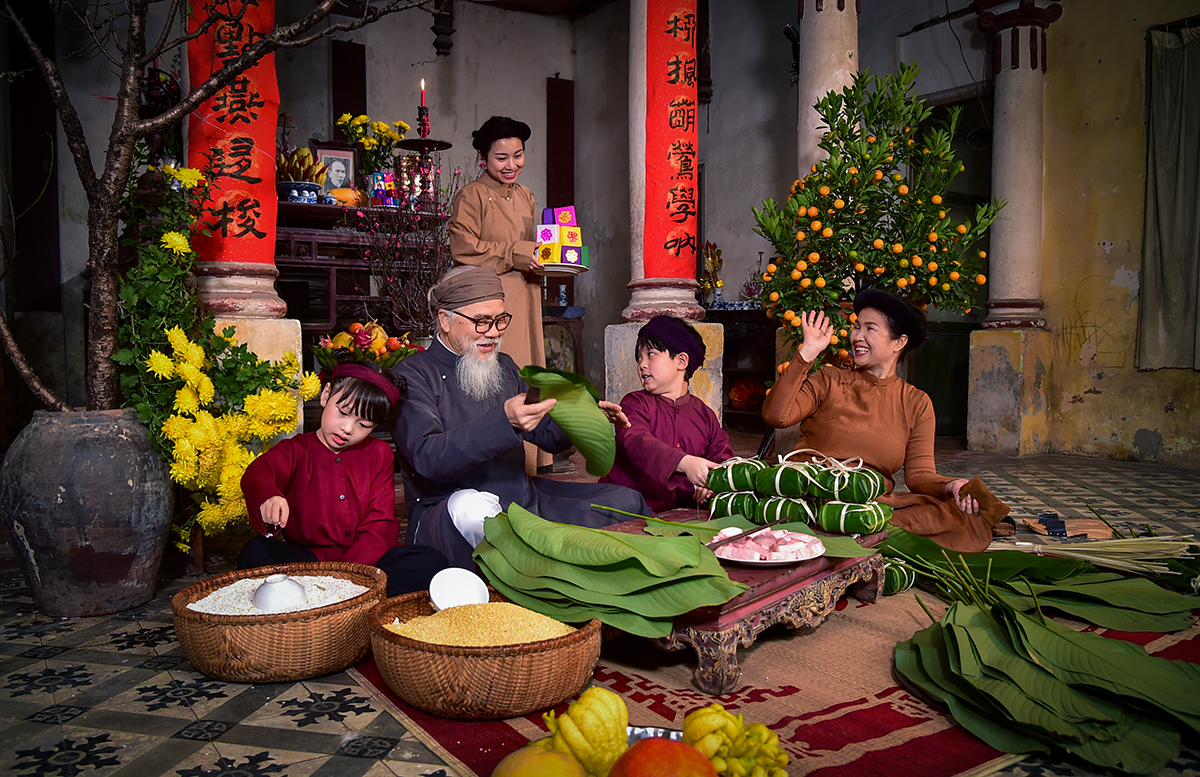Vietnamese Lunar New Year, known as “Tet Nguyen Dan,” is the most important and cherished holiday in Vietnam. This festival, deeply rooted in the country’s culture and history, represents a time of renewal, family reunions, and the celebration of traditional values. Lasting for several days, typically falling in late January or early February, Tet marks the arrival of the Vietnamese lunar calendar’s first day. Its rich customs, festive preparations, and profound cultural significance make Tet an occasion that encapsulates the spirit of the Vietnamese people.
Tet Nguyen Dan is more than just a holiday; it’s a reflection of Vietnam’s historical and cultural tapestry. Its origins can be traced back thousands of years, evolving and adapting over time to become the elaborate celebration it is today. The festival signifies the country’s agricultural heritage, with the date of Tet being determined by the lunar calendar, closely tied to the agricultural cycle. It is a time to give thanks for the harvest, pray for a prosperous year ahead, and honor ancestors who have passed away.
One of the most notable customs leading up to Tet is the meticulous cleaning and redecorating of homes, known as “Don Tet.” It is believed that cleaning the house and decorating it with vibrant flowers, such as apricot and peach blossoms, symbolizes the removal of bad luck and the welcoming of good fortune. These flowers not only add beauty but also convey symbolic meaning – apricot blossoms represent the north, and peach blossoms represent the south, illustrating the unity of the nation. The kumquat tree, with its tiny golden fruit, is another essential element, signifying wealth and prosperity. Homes are adorned with colorful paper lanterns, traditional paintings, and family altars laden with offerings for ancestors. The scent of incense fills the air, creating an atmosphere of reverence and warmth.
Tet Nguyen Dan is a time for families to come together, and for many Vietnamese, it’s the one occasion during the year when they can reunite with loved ones. People travel long distances to return to their ancestral villages and hometowns, a tradition known as “ve que” or “going back to the roots.” This annual migration is often marked by heavy traffic on the roads and bustling train stations, as millions of people make their way home. Families are reunited in a heartfelt embrace, and generations gather under one roof. Elders receive red envelopes, or “Li Xi,” containing money, which are given to children and young adults to wish them good luck and prosperity in the coming year.
The culinary aspect of Tet is a highlight of the celebration, with a wide array of traditional dishes that hold deep cultural significance. Banh chung, a square glutinous rice cake wrapped in banana leaves, and banh tet, a cylindrical version, are staples of Tet feasts. The preparation of these cakes is a family affair, with generations coming together to create this special delicacy. The square shape of banh chung is said to represent the earth, while the round banh tet symbolizes the sky, making them offerings that connect the human world to the divine. These cakes are served with pickled onions, a perfect blend of textures and flavors.
Another cherished dish is “thit kho,” caramelized pork and eggs, which signifies a sweet and prosperous year. Tet menus often include various pickled vegetables, fish sauce, and a range of fruits such as watermelon, custard apples, and mandarins. Every dish prepared for Tet has its own unique symbolism, and the culinary traditions of the holiday showcase the importance of family unity and prosperity in the coming year.
The “Mam Ngu Qua” or “Five-Fruit Tray” is an essential component of Tet offerings. It includes five different fruits, each representing a unique wish for the upcoming year. Often, the selection includes a watermelon, custard apple, papaya, figs, and mangoes. These fruits carry specific meanings: watermelon symbolizes safety, papaya represents a prosperous year, custard apple signifies hope, figs represent fertility, and mangoes symbolize the wish for an auspicious beginning.
The first day of Tet, known as “Tet Nguyen Dan,” is a time for paying respects to ancestors. Families visit pagodas and temples to make offerings and seek blessings for the year ahead. They light incense, present fruits and flowers, and perform traditional rituals to show reverence to their ancestors. Ancestor worship is a fundamental part of Vietnamese culture and is deeply ingrained in the celebration of Tet.
Another prominent Tet tradition is the exchange of greetings. People offer each other well-wishes, often using specific phrases like “Chuc Mung Nam Moi” (Happy New Year) and “An Khang Thinh Vuong” (Security, Good Health, and Prosperity) as a way to convey their hopes for the coming year. Red envelopes, or “Li Xi,” containing money, are gifted as a symbol of good luck and blessings. The act of giving and receiving these envelopes is an expression of goodwill and a way to ensure that both the giver and receiver have a prosperous year.
The colorful atmosphere of Tet extends to various forms of entertainment. Traditional music, such as “Xam” and “Quan Ho,” is performed, filling the air with melodies that reflect the country’s rich cultural heritage. Lion and dragon dances are also a common sight during Tet, as they symbolize warding off evil spirits and bringing good fortune. Fireworks displays light up the night sky, adding to the festive ambiance, while young children are often treated to various games and rides at local fairs and festivals.
In the lead-up to Tet, people purchase new clothes, known as “ao dai,” to wear during the holiday. The ao dai is the traditional Vietnamese attire, a symbol of elegance and beauty. It is a form-fitting, long gown for women, often worn with matching trousers, and a long tunic for men. The ao dai is typically made from vibrant silk fabrics, with intricate patterns and embroidery. Wearing new clothes during Tet signifies a fresh start, and it is a way to honor the holiday’s importance.
For those living in urban areas, Tet can also involve contemporary elements. The practice of giving and receiving gifts, particularly to and from one’s superiors and colleagues, is common. In cities like Ho Chi Minh City and Hanoi, Tet is celebrated with colorful parades and vibrant displays that attract both locals and tourists. The streets come alive with flower markets, lanterns, and cultural performances.
Despite the modernization of certain aspects of Tet, the core values and customs that underpin this celebration remain deeply rooted in tradition. The importance of family, respect for ancestors, and the symbolism of various rituals continue to be upheld. Tet Nguyen Dan serves as a reminder of the enduring cultural legacy of Vietnam, where the past and the present seamlessly intertwine.
As with any cherished tradition, Tet comes with its own set of superstitions and taboos. For instance, sweeping or cleaning the house on the first day of Tet is considered bad luck as it may sweep away good fortune. Debts should be settled before the holiday to avoid carrying financial burdens into the new year. Wearing black or white during Tet is discouraged, as these colors are associated with mourning, and it’s essential to start the year on an auspicious note.
In recent years, Tet has also embraced a global perspective as the Vietnamese diaspora celebrates the holiday all over the world. The Vietnamese community in various countries ensures that the traditions and customs of Tet are upheld, even in foreign lands. This global celebration of Tet not only helps preserve Vietnamese culture but also shares its beauty and significance with the rest of the world.
Tet Nguyen Dan is a time for the Vietnamese people to reflect on their culture, history, and values. It’s a festival that unites families, communities, and the entire nation in celebration. As the first lunar month begins, Tet marks a fresh start, symbolizing hope, unity, and the enduring spirit of Vietnam. The customs, food, and traditions of Tet all contribute to creating a cultural tapestry that is rich, vibrant, and deeply meaningful.


Comment (0)